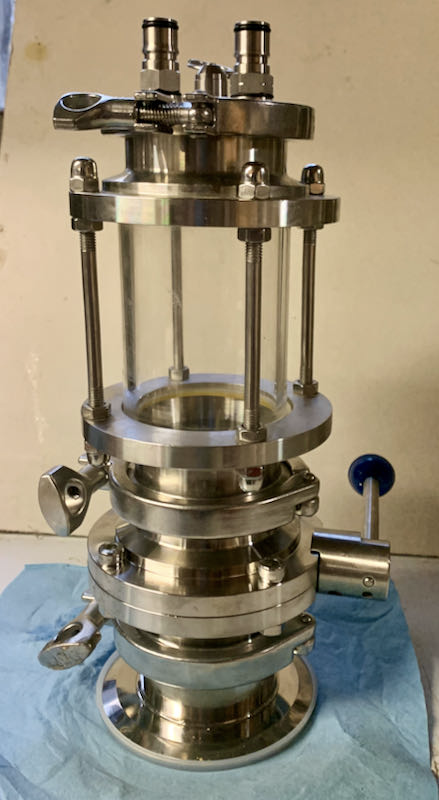You'd have either to ferment under pressure or dry hop after spunding. In each case you'll lose CO2 and hence pressure. In the latter case you'll have to add CO2 from a bottle and that's a big no-no if you're conviced bottled CO2 is evil...
A better compromise would actually be to add the dry-hop charge, close off the chamber and then immediately and quickly open and close the valve as soon as the pellets have dropped into the fermenter. This way the O2 in the chamber won't have time to completely diffuse into the headspace but only a portion of it will make it into the fermenter and will then have to be scrubbed by further fermentation.
Paradoxically, with the "fermentation CO2 scrubbing" gimming you're introducing maximum oxygen in the fermenter. By performing a "drop, duck and close" you can only introduce less oxygen as the chamber volume is the same but only a fraction of the oxygen will make it into the fermenter.
A better compromise would actually be to add the dry-hop charge, close off the chamber and then immediately and quickly open and close the valve as soon as the pellets have dropped into the fermenter. This way the O2 in the chamber won't have time to completely diffuse into the headspace but only a portion of it will make it into the fermenter and will then have to be scrubbed by further fermentation.
Paradoxically, with the "fermentation CO2 scrubbing" gimming you're introducing maximum oxygen in the fermenter. By performing a "drop, duck and close" you can only introduce less oxygen as the chamber volume is the same but only a fraction of the oxygen will make it into the fermenter.



![Craft A Brew - Safale BE-256 Yeast - Fermentis - Belgian Ale Dry Yeast - For Belgian & Strong Ales - Ingredients for Home Brewing - Beer Making Supplies - [3 Pack]](https://m.media-amazon.com/images/I/51bcKEwQmWL._SL500_.jpg)
























































